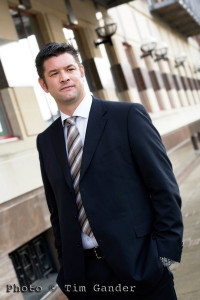I should start by explaining that this article isn’t talking about family portraits or photos for the mantelpiece. What I’m talking about here is the business portrait. The corporate headshot for the profile page of a commercial website, newsletter or chairman’s statement in the annual report.
Why is this distinction important? Mainly for licensing reasons. If you go to a high street photographic studio and have photos taken you will probably pay about £30 for a sitting, and £100 for a print to hang on the wall. And personal use is all you’ll be allowed of that photo. Commercial use would require payment of an extra fee, and I suspect most studios wouldn’t be happy handing over an original digital file for that use as you could then get your own reprints done, which would of course breach the photographer’s copyright.
When you have a photographer visit your offices to take portraits for the company website/brochure etc, you’re not paying for prints for personal use (though you can probably buy those if you want), instead you’re paying a licence fee to use the images for corporate use. This is a different kind of agreement with the photographer and the pricing structure is different.
Of course if you book a photographer and then just have a single headhsot done, it can work out relatively expensive. Perhaps £250 to get a small selection of images for use across various media. But if you line up a few headshots to be taken at the same time, the cost will rise but the individual price for each headshot will drop quite dramatically.
It’s often quite difficult to explain this concept to clients who will say “well it’s only some portraits, they shouldn’t take long.” The thing is, in commercial and corporate photography, it isn’t just the time taken to get the shots that you’re being charged for, but also the commercial (as opposed to domestic) value of the photos. Remember, these photos are part of your marketing, and hopefully will help your business make more money. They may not be used as prominently as your product shots, or general photos of your business operation, but they’re all part of the mix and to have any value to your business, they have to be good. Which requires skill, time and equipment to achieve.
In short, you need to give the humble head and shoulders photo some respect and also understand that what you’re paying for is a combination of the photographer’s skill, experience and time on the commission, as well as a fee for the commercial exploitation of the results.
And what is that worth? As I said earlier, if you hire a photographer to take just one headshot you could easily pay £250 for that, maybe more. Get a batch of portraits done in half a day and the rate might rise to around £500, but if 10 portraits are done, that works out at £50 per head. That’s less than you’d pay for a 10-inch print to hang on your wall at home, and your clients can’t even see that photo. Unless they’ve broken into your house.


